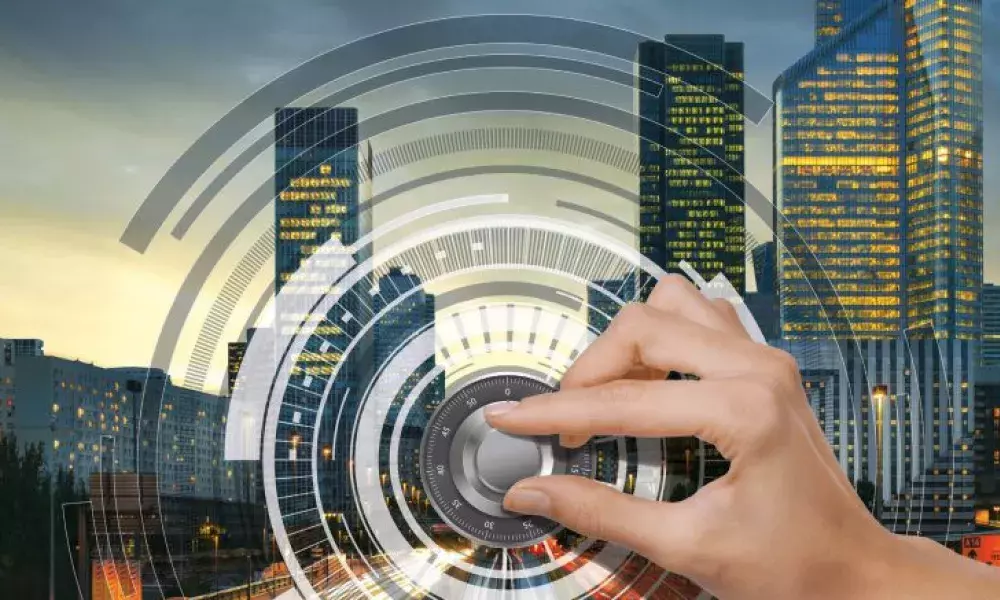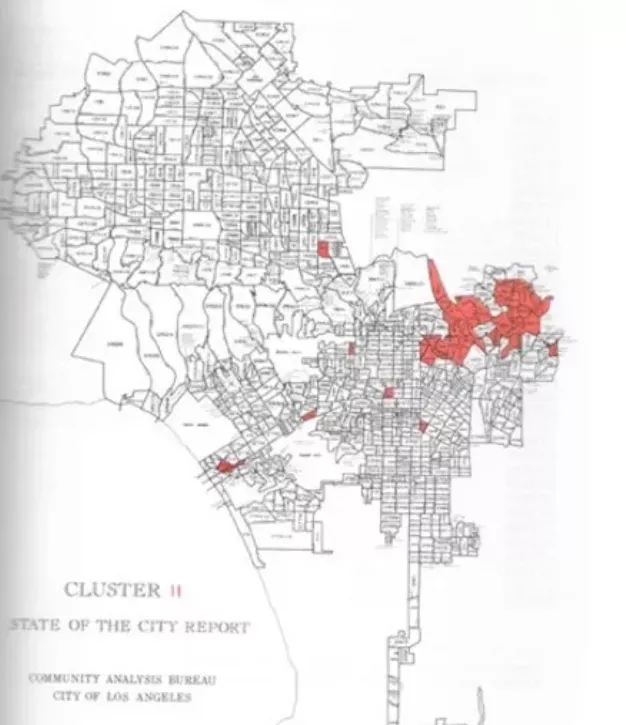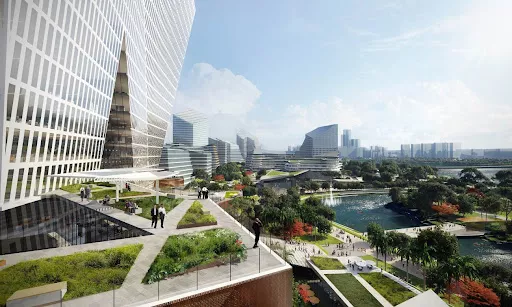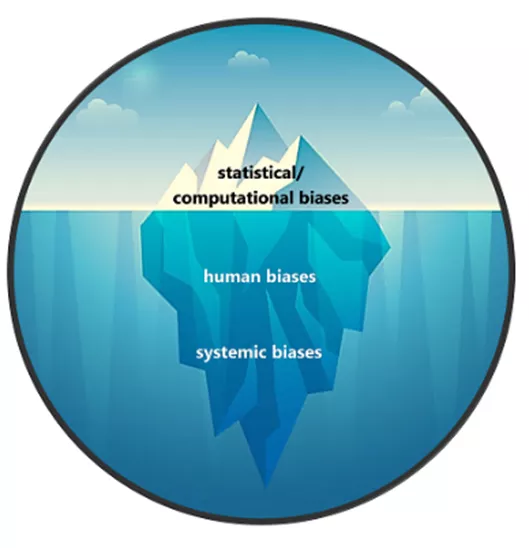
Technological solutions promise to make our lives better, easier, more efficient. Naturally, we seek to apply these solutions to issues larger than homework, such as the sustainable development of cities.
Many cities around the world are experimenting with new and promising technologies to better manage traffic, waste management, energy, and security.
The city of Piraeus has entered this arena and applied technology in the Be Secure Feel Secure (BSFS) project, namely through the development of the CURIM app. The BSFS project took several steps towards the integration of data collection and analysis related to the local territory. The app aims, among other things, to gather data regarding security and promote the development of a local safety network in the city.
These developments have led to interesting discussions of smart cities and how they relate to security, which we will explore in this article.
What makes a city “smart”?
Cities have donned many labels that have come in and out of fashion and pertinence: global cities, sustainable cities, knowledge cities, digital cities, and of course, smart cities.
What a smart city is has evolved over time. However, scholars observe that most of the definitions encompass a broad use of technology to gather and process information for monitoring, optimizing, and managing a city.
Smart cities are characterized by the broad use of ICTs (information and communication technologies), a strong pro-business ethos, high level openness, real-time monitoring, increasing use of technologies and innovations, citizen empowerment, and a focus on sustainability [1].

According to researcher Stephen Galati, the concept of a smart city encompasses the following main dimensions [2]:
- Smart economy: innovation, economic impacts, and return on investment; circular economy.
- Smart mobility: intelligent transportation, intelligent parking solutions, traffic manageffasdfasdfasment, mobility-as-a service.
- Smart environment: water and waste management, monitoring of environmental indicators, sustainable processes, and urbanization.
- Smart people: connected citizens, workers, and visitors; e-health; e-learning.
- Smart governance: digital automation of processes, open data, citizen participation.
- Smart living: smart spaces, advanced materials, public security, and urban resiliency.
Safe cities and smart cities
Smart city projects in Hong Kong, Singapore, London, and Toronto were highly visible in the 2010s. And the COVID-19 pandemic in 2020 further incentivized cities to adopt new technologies that allowed for the use of data to face an unprecedented health crisis.
However, an early landmark in computer-assisted data projects to understand and manage cities dates to 1974: The “State of the City: A Cluster Analysis of Los Angeles” report produced by the Los Angeles Community Analysis Bureau.
This study classified neighbourhoods into clusters to show characteristics and patterns. The Community Analysis Bureau sought to create a data-driven urban information system to understand and tackle problems such as wealth distribution, unemployment, housing, education, and crime.

It is worth noting that an earlier report by the bureau acknowledged the limitations of physical transformations to deal with the state of the city:
It has become obvious that the traditional approach to urban renewal, the treatment only of physical problems, is not adequate… to deal with the social, economic, and physical nature of urban decay. [3]
It is perhaps no coincidence that this report emerged during a time in which LA was marked by unrest due to violence against minorities, accelerated urban sprawl, and a peak in crime. New urban challenges called for new and better ways of understanding.
As noted earlier, a characteristic of a smart city is smart living, related to public security and resiliency. Safety and security are requirements for the creation of a smart city. As with the smart city, the features of a smart safe city aim to include vast aspects of security, from crime to wellbeing and technology, as stated by researchers Jozef Ristvej, Maros Lacinák, and Roman Ondrejka: intelligent safety technologies, healthcare, cybersecurity, intelligent technologies for crisis management and forecasting emergencies, and centrally managed technologies of police and integrated rescue systems [4]. How do these very diverse concepts operate in real cities? Do they really keep city dwellers safe?
A critical view at technology for safer cities
Cities are complex organisms; it is only natural that we seek ways to make its management simpler. The need to feel safe in the environments we live in is basic. And technology appears to resolve this issue: better information for better understanding and better solutions.
Advancements in data collection and analysis has been key to understand phenomena related to crime. Nevertheless, their uses have come with plenty of concerns, ranging from privacy to discrimination. For example, the aforementioned Sidewalks Labs in Toronto faced important constraints due to privacy concerns of the large amount of data required.
Often, smart city projects are presented as new utopias built from scratch, with a strong focus on optics and aesthetics: how the city looks from above, or from a mid-distance, with imposing shiny skyscrapers covered or surrounded by greenery (for “sustainability purposes”), populated with renderings of stylish and carefree individuals. Insecurity is of course absent in these idyllic representations.
Existing cities really put smart tools to the test in the field of urban security.

Urban stakeholders implement smart solutions aiming to modernize cities and solve pressing issues such as security. Nevertheless, there are few discussions or questions about how new smart city security might affect traditional policing and urban planning processes, as researchers from the Jill Dando Institute of Security and Crime Science at the University College London point out [6].
Artificial intelligence is often presented as a tool that can bypass human limitations and give us objective information: it can gather and treat impressive amounts of data, therefore, the more data we feed, the better we can solve urban problems, allegedly.
But these supposedly autonomous, self-sufficient, and objective new tools are sustained by human labour, and they do not exist in a vacuum. Models trained by humans, with biases and errors, not necessarily versed on the understanding of issues that relate to security and violence (direct and systemic) such as gender inequality, racism, and other forms of discrimination.

The challenge of managing AI bias. Source: National Institute of Standards and Technology
A 2022 report by the National Institute of Standards and Technology in the United States on identifying and managing bias in AI found that:
IT specialization is overrepresented while sociological training is underrepresented. Without this sensitivity, technology will not eradicate discrimination, it will only be more efficiently (and unwittingly) exerted.
Limitations of tech for security are clear when we observe vulnerable groups. Examining cities in India and women, a study by Priyanka Kohli and Kawaljeet Singh from the Department of Computer Science and Engineering in Punjabi University revealed that:
Whether a city is smart or non-smart, the crime against women is never ended (…) Many preventive laws and measures have been taken to stop these worst activities. Still the measures have not affected the growing rate of such crimes (…) Many cities are now developed into Smart cities but safety of women safety is still an increasing concern [7].
Final notes
Technology is frequently presented as the remedy to all urban ailments, from transportation and energy management to security and citizen participation. However, we ought to approach smart cities with a critical mindset, particularly when it comes to urban security to avoid inadvertently reproducing harm.
It is critical for those who wish to pair technology, security, and city making to keep in mind the crucial place humans need to have in the smart/safe city.
Sociology, criminology, and political science have the potential to make valuable contributions in reimagining security within smart cities. This is particularly relevant due to the necessity to move beyond traditional perspectives of crime and urban environments and become inclusive and safe for all.
References
- J. Montes, "A Historical View of Smart Cities: Definitions, Features and Tipping Points," 21 July 2020. [Online]. Available: https://ssrn.com/abstract=3637617. [Accessed March 2024].
- S. Galati, "Funding a smart city: From concept to actuality," in Smart Cities, S. J. J. K. G. McClellan, Ed., Springer, 2018.
- M. Vallianatos, "Uncovering the Early History of “Big Data” and the “Smart City” in Los Angeles," Boom California, 16 June 2015. [Online]. Available: https://boomcalifornia.org/2015/06/16/uncovering-the-early-history-of-big-data-and-the-smart-city-in-la/. [Accessed March 2024].
- J. Ristvej, M. Lacinak and R. Ondrejka, "On Smart City and Safe City Concepts," in Mobile Networks and Applications, 2020, pp. 836-845.
- R. Schwartz, A. Vassilev, K. Greene, L. Perine, A. Burt and P. Hall, "Towards a Standard for Identifying and Managing Bias in Artificial Intelligence," 2022. [Online]. Available: https://nvlpubs.nist.gov/nistpubs/SpecialPublications/NIST.SP.1270.pdf.
- J. Laufs, H. Borrion and B. Bradford, "Security and the Smart City: A Systematic Review," in Sustainable Cities and Society, 2020.
- P. Kohli and K. Singh, "Analysis of Woman Safety Parameters in Smart and Non-Smart Cities," in 2021 9th International Conference on Reliability, Infocom Technologies and Optimization (Trends and Future Directions) (ICRITO), Noida, 2021.
About this resource
The Urban Innovative Actions (UIA) is a European Union initiative that provided funding to urban areas across Europe to test new and unproven solutions to urban challenges. The initiative had a total ERDF budget of €372 million for 2014-2020.
Similar content



